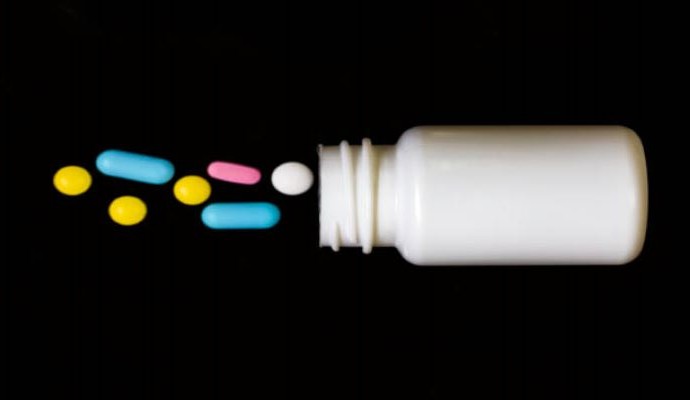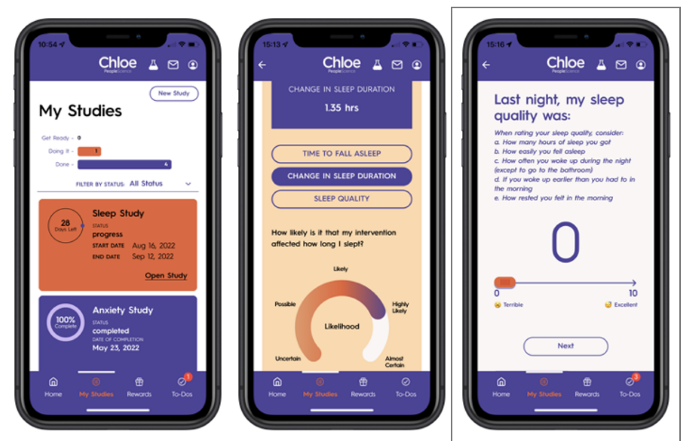How Can Remote Patient Monitoring Improve OUD Care?
A new remote patient monitoring platform may help improve access and quality of OUD care.

Source: Getty Images
- Opioid use disorder (OUD) has become a very prevalent substance abuse issue. According to the CDC, approximately 75% of overdoses in 2022 involved an opioid in the United States. The pharmaceutical industry has contributed significantly to the rising rates of OUD. As providers have recognized the risks associated with opioids and OUD, they have been looking to determine ways to treat OUD. Despite the efforts, multiple barriers to treatment are present, but remote patient monitoring and new digital platforms may revolutionize how care is managed.
In a recent press release, People Science and Sen-Jam Pharmaceuticals announce their partnership on a tool for opioid use disorder (OUD). PharmaNewsIntelligence interviewed Belinda Tan, Co-Founder and Co-CEO of People Science, to discuss the platform and its benefits.
Overview of CHLOE
“The Consumer Health Learning and Organizing Ecosystem (CHLOE) is a robust people-forward clinical research platform. Consumer users and patients access an iOS or Android-compatible mobile app that engages them on their path to wellness through study participation,” shared Tan.
Tan and her team shared an inside look at the app’s interface:

Source: People Science
“The back end of the software allows researchers to operationalize protocols and workflows for clinical research studies. In this partnership, the team is using CHLOE as the platform to support the care of people suffering from opiate use disorder and pain,” she continued.
Beyond just monitoring the patients and supporting care, the researchers collaborate with clinicians to develop patient engagement and tracking tools. Additionally, Tan mentioned that the team hopes to design protocols to enhance patient–provider relationships.
Data Collected and Its Direct Impacts
PharmaNewsIntelligence asked Tan about the kind of data CHLOE will collect and how it will impact the treatment of OUD and other pain disorders.
“CHLOE will collect data, including responses to surveys, which are assessments collected in clinical research studies. It will also collect wearable sensor data like Fitbit or Apple Watch sleep metrics,” responded Tan. She expanded by saying that CHLOE will collect more data, giving providers additional information on the patient’s condition.
“The challenge with treatment regimens is that in between the time patients see their doctors a lot is happening, and there is valuable data during those periods that can better inform whether or not a treatment is working and how to adjust to the regimen,” she added.
Tan also emphasized that treatment regimens garner different responses in each patient. Each patient’s treatment plan is adjusted based on their needs and outcomes.
“This usually happens over the course of weeks or months. The data collected will support the process of making treatment regimen adjustments, for example, how quickly to taper a medication or when to add a new one,” explained Tan. “A patient may experience severe pain two or three days of the month and not during their monthly appointment with the doctor. It is valuable for their doctor to know this and see the data so that perhaps a rescue medicine can be added to the regimen rather than increasing a daily dose when most days the pain is well controlled.”
Differences from Traditional Monitoring
The ability for continuous monitoring is a crucial difference between CHLOE and traditional monitoring. “Traditional monitoring involves assessing patients during their appointments, which may happen in intervals of weeks or months. In between those visits, patients may communicate issues with their doctor by phone or email; some patients may track their symptoms on paper and share this during their doctor visits. Patients can assess how various treatment regimens are working,” Tan said.
She added that CHLOE improves continuity of care by saying, “our technology allows monitoring over the course of treatment and even beyond during maintenance or remission of symptoms. This is important for the continuity of care between the patient and their doctor over the long term. We build customized modules and specific protocols to support clinicians engaging with their patients while optimizing their care for pain and OUD.”
Long-Term Impacts of CHLOE
In addition to the direct, immediate impacts of the CHLOE platform on care and remote patient monitoring, PharmaNewsIntelligence also discussed the potential long-term implications of the tool.
OUD Care
The first of the many impacts is accessibility. Tan and her colleagues believe that CHLOE will help improve access to OUD care because it will provide more longitudinal consistent access to care. “OUD care involves understanding how to manage pain and withdrawal symptoms. Because each patient may respond differently to a treatment regimen and dosing, monitoring how the patient is feeling (e.g., daily pain severity) and what they are changing in their regimen is important for the clinician to know,” Tan reiterated.
Decreased Care Costs
The cost of care usually hinders access to OUD treatment. Regarding reducing care costs, Tan emphasized that the ability to implement remote patient monitoring will indirectly lead to a reduction in care costs.
According to the National Institute on Drug Abuse, the total economic burden of OUD in the US is nearly $78.5 billion annually. Treatment contributes $2.8 billion to that number.
“What is lacking in OUD treatment and many other conditions is for patients and doctors to track and monitor their symptoms and progress. In this trial and error process, capturing the learnings of what works and what doesn’t is valuable knowledge that can inform doctors on how they can manage other patients in their practice. This experiential knowledge usually exists within an individual doctor’s mind, and our technology will help to create the knowledge by sharing lessons learned. This added efficiency can decrease care costs,” asserted Tan.
She added, “Because the technology can help facilitate the democratization of symptom tracking and expand access to clinical approaches for non-opioid based medications, we can start to carve a pathway toward better solutions that unlock the current vicious cycle of opioid use disorder.”
Tan also explained that physical withdrawal symptoms are only one component of OUD treatment. “While the withdrawal symptoms are a huge reason why getting off opioids is so challenging, the other psycho-social complications are significant. Currently, with medication-assisted treatments (MATs), OUD sufferers ultimately replace one controlled substance for another as the approach is truly a replacement therapy,” Tan pointed out.
“Unfortunately, patients often experience a ‘boomerang’ stigma where society at large suggests they are ‘not truly in recovery if you’re still on an opioid.’ The many dynamics surrounding opioid use and treatment are vast. Our approach may help simplify and advance legitimate progress in the current impasse in the system.”
Impacts on Research
CHLOE may also have many impacts on research for OUD. Tan believes “the people-forward approach at People Science will broaden the range of who can ask questions, which can contribute to the solutions, whose voices are heard, and how the results inform society.”
In addition to expanding the conversation around OUD treatment and research, Tan suggests the platform will allow for a larger group of participants to be included.
“A large barrier in research is who gets to participate. This then impacts who is included in the discoveries and, thus, who can benefit from the discoveries. People with addiction and mental health problems struggle with accessing care and managing the logistics of their daily lives. Fortunately, there is research showing that people suffering from mental health disorders will continue to use their mobile devices to report symptoms,” noted Tan. “By engaging directly with the people suffering from addiction and with the providers supporting their healing, we have a much better chance of identifying medicines and approaches that reflect the needs of these communities.”
Tan concluded by saying, “to help put tracking instruments into the hands of patients, we aim to help empower a population of people stuck in a vicious cycle of disempowerment. Today’s addiction research barriers often relate to reporting and facilitating new options. CHLOE and our partnership with Sen-Jam Pharmaceutical may help alleviate both.”
